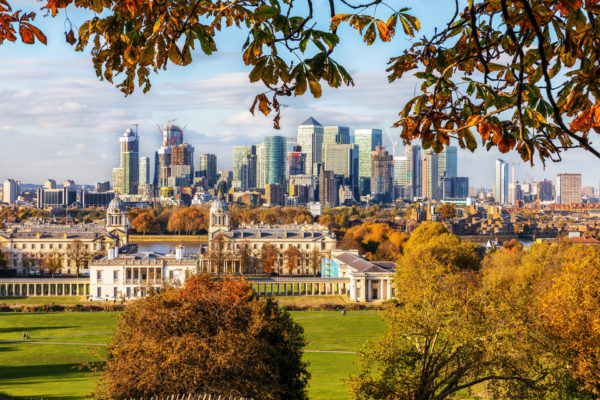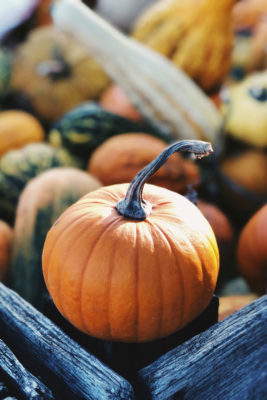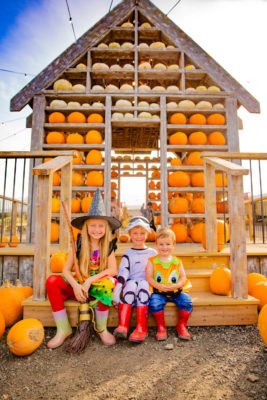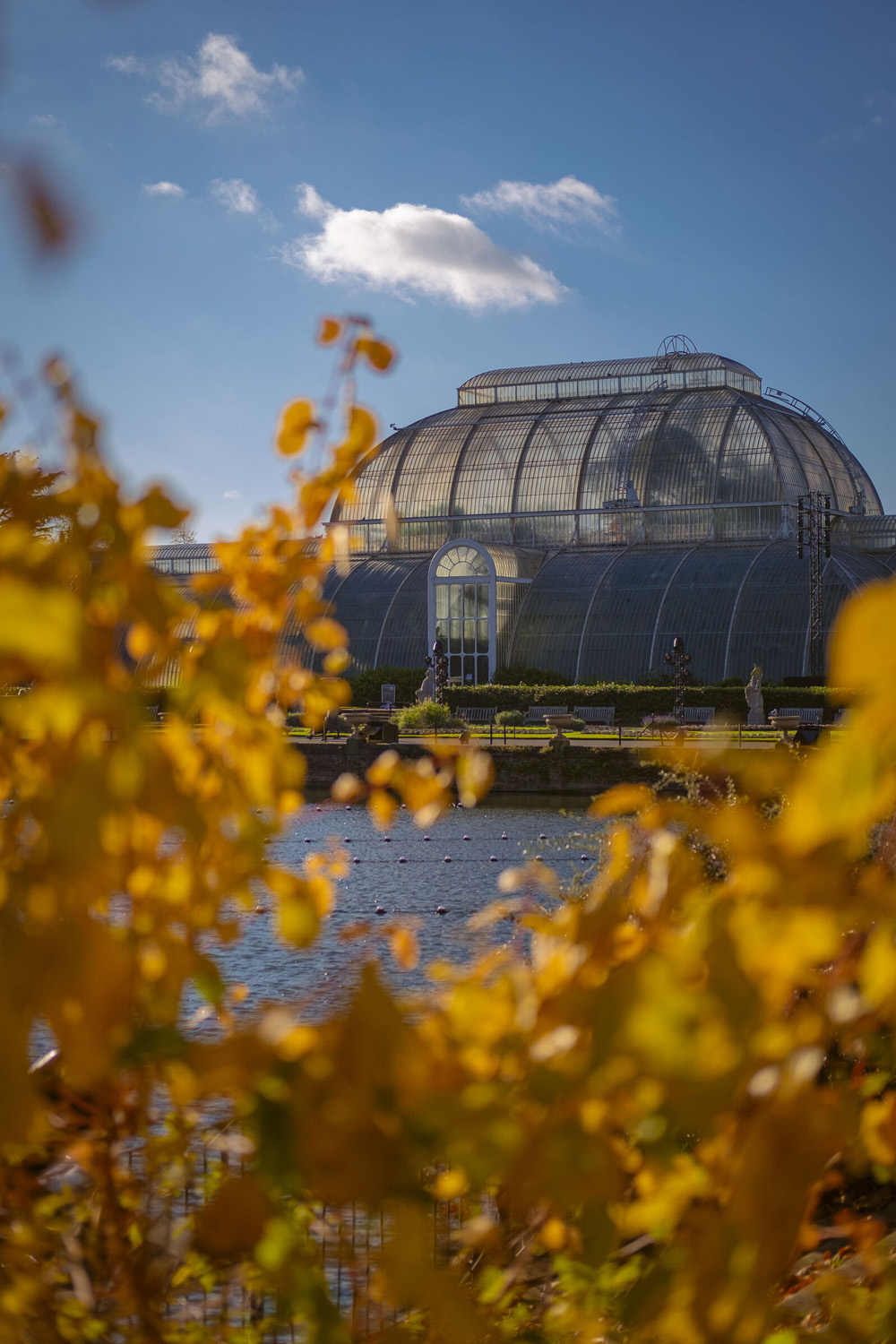
An Autumnal Guide To Kew Gardens
By
6 months ago
What to expect at the UK's largest arboretum this season
A UNESCO World Heritage Site and home to more than 11,000 trees, Kew Gardens is a sight to behold whatever the weather – but autumn is an especially intriguing time of year. As summer’s vibrant green leaves transform to oranges and browns, the whole landscape is metamorphosed. We asked the Kew Gardens team what we can expect this season.
What Is Kew Gardens Like In Autumn?
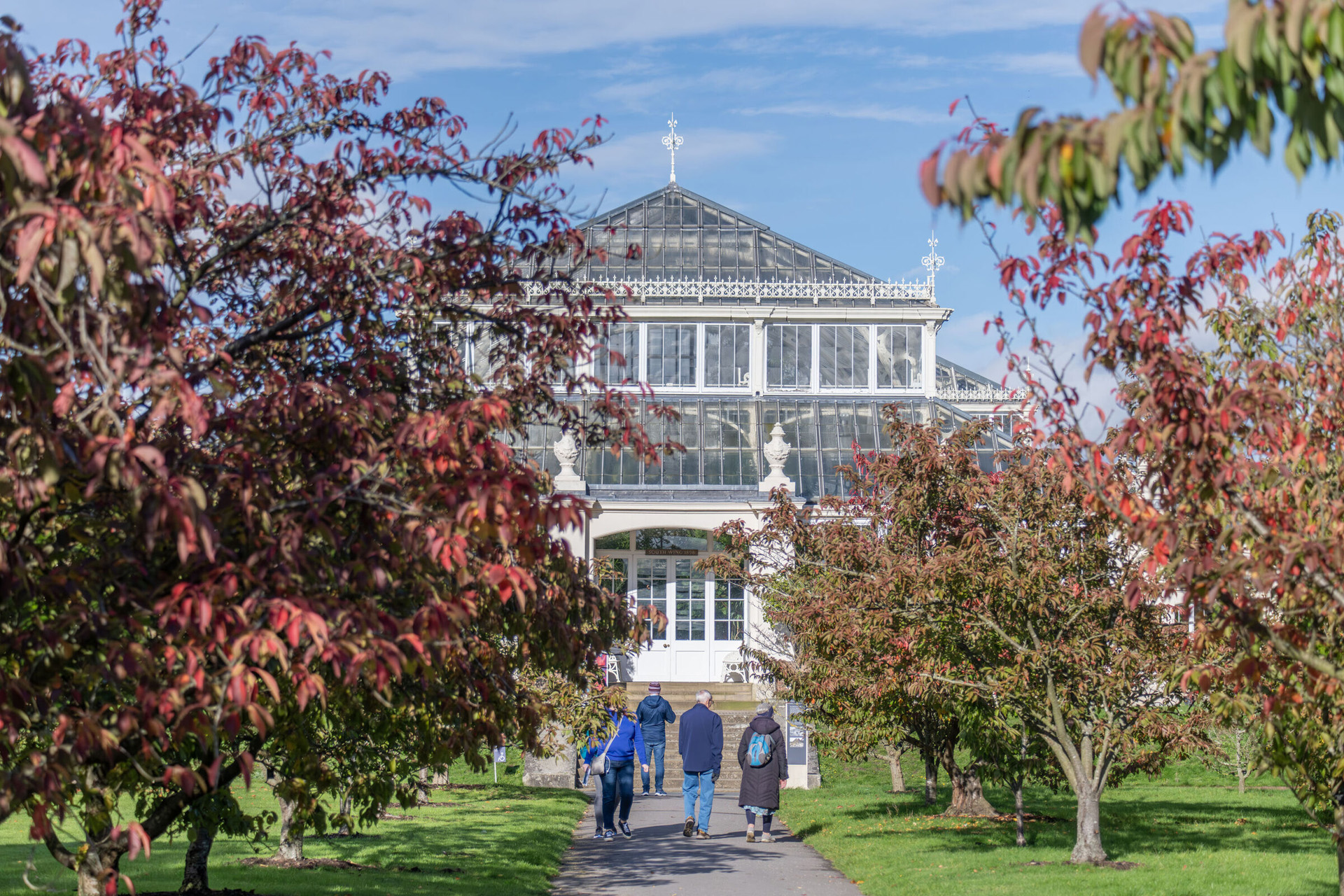
Prunus by the Temperate House in autumn, 2023
What can visitors expect to see wandering around Kew in the autumn that we might not see in other seasons?
Home to over 11,000 trees, Kew Gardens in southwest London is transformed each autumn.
Visitors to the UNESCO World Heritage Site can’t miss the showy displays of the Tulip Tree (Liriodendron tulipifera), Sweet gum (Liquidambar styraciflua) and Hickory (Carya species). In the coming weeks, deep reds and purples will frame Kew’s iconic Palm House pond, while Viburnum and rowan (Sorbus species) berries will provide bursts of colours around the Gardens. A stroll through the Rock Garden will reward you with late-flowering sedums, autumn crocuses and silver vegetation.
Early October marks harvest time for Edible Science: Kew’s Kitchen Garden. During this period, the Georgian walled Kitchen Garden is transformed from an abundant display of greenery, readying the ground for the planting of winter crops, as well as onions, garlic and peas – all of which can be overwintered.
During a visit in November, eagle-eyed visitors can spot the first snowdrops (Galanthus) in the Rock Garden, and Kew’s new Winter Garden begins to flourish.
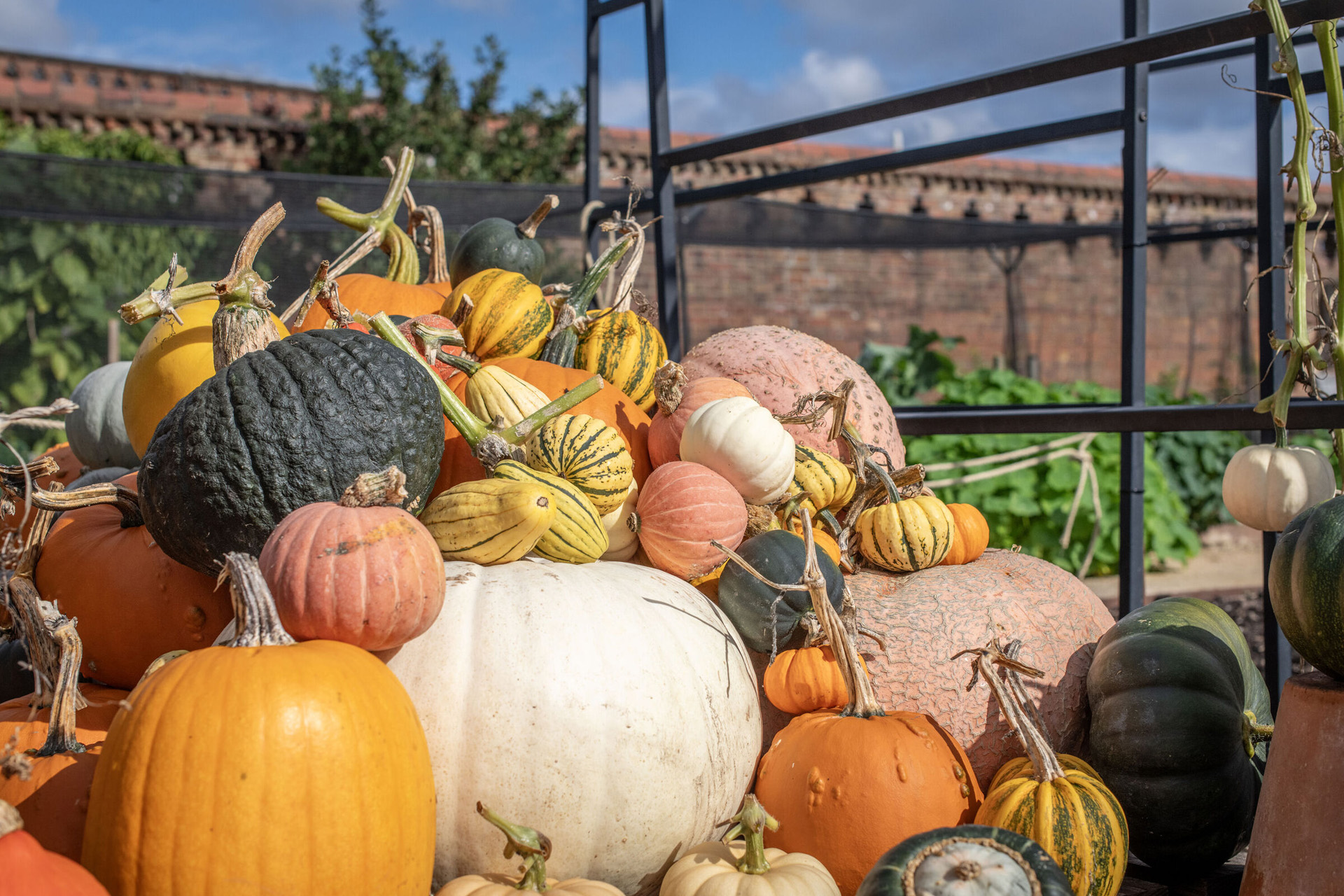
Pumpkin patch in the Kitchen Garden, October 2024
Which areas of Kew Gardens look especially good in autumn?
There are many places to enjoy the dramatic changes, but the best spots are the Treetop Walkway and the Arboretum. Wandering along the Treetop Walkway gives you a birds eye view of the entire Gardens, which changes quickly during this season as the leaves begin to fall. A visit later in the year will offer less colour, but jaw-dropping views. If heights aren’t for you then a walk through the Arboretum enables you to crunch through copper-coloured leaves and gaze up at an ever-changing canopy.
The Grass Garden is also stunning at this time of year, exhibiting an array of hues and textures. A variety of seed heads offer incredible architectural interest, and act as an important source of shelter for insects and other small creatures as we head into the winter months. This area of the Gardens is also a multi-sensory adventure, with long grasses rustling as the wind blows through billowy stems.
Which trees should we keep our eyes peeled for?
With 11,000 trees from across the world, Kew Gardens boasts the largest arboretum in the UK. Of these, 2,700 are oaks, and many offer an impressive display of autumn colour and acorns. Kew’s sawtooth oak has acorns that sit in frilly cups, whilst the red oak, Quercus roba, puts on a flashy show of crimson along the Riverside Walk. Also look out for the beautiful russet-leaved pin oaks (Q. palustris) near the Treetop Walkway.
One tree you shouldn’t miss is the huge chestnut-leaved oak (Quercus castaneifolia) near the Waterlily House. This is one of Kew’s champion trees (the largest of its kind in the country) and the largest tree, by volume, in the Gardens.
Several old sweet chestnuts (Castanea sativa) sit close to the Mediterranean garden, some of which are thought to date from the early 1700s when the land was part of the original royal estates. Their twisting, ridged bark is indicative of old age. Sweet chestnuts put on a beautiful display of golden foliage in autumn, and cover the ground with their shiny brown nuts in spiky casings.
Around the Palm House Pond you’ll find several swamp cypress (Taxodium distichum), whose delicate leaves of copper and gold are reflected in the water. The foliage on a huge London plane (Platanus x hispanica) and a pair of tulip trees (Liriodendron tulipifera) turns a beautiful yellow in autumn, framing the Palm House beautifully. Wander beyond this to the Great Broad Walk Borders and you’ll find several sweet gums (Liquidambar styraciflua) which put on one of the Gardens’ best autumn displays. Their very pointed, maple-like leaves turn a kaleidoscope of yellows, reds and deep burgundy as autumn progresses.
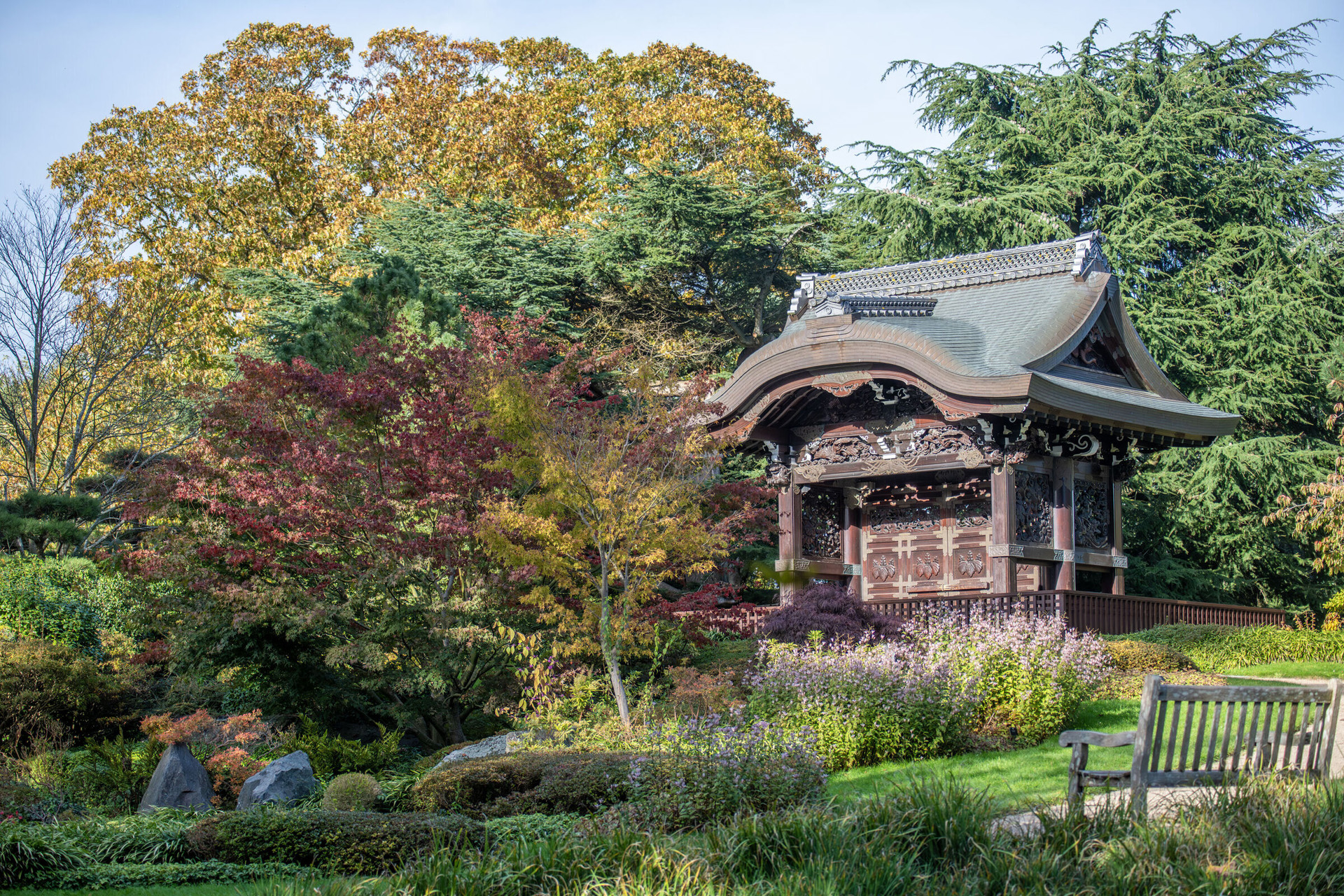
The Chokushi-Mon and Japanese Landscape in autumn
Could you recommend any hidden gems or lesser-known spots within Kew Gardens that are especially beautiful in autumn?
Though it’s not hidden, few people stumble upon the lake at Kew. The five acres of water are studded with four islands, each providing vibrant colours in the autumn months. Chinese tupelo trees (Nyssa sinensis) turn a deep red, while black tupelo trees (N. sylvatica) glow red, orange and yellow, all enhanced by their reflection in the lake.
Elsewhere the Natural Area is a haven for those looking to enjoy quiet contemplation and immerse yourself in the landscape and notice small details. Buzzing with life, this wilder area of Kew is a treat whatever the season.
Head down to the maple collection near the Shirley Sherwood Gallery of Botanical Art for a really breathtaking autumn spectacle, and stop in to see Expression in Blue, a major solo exhibition by acclaimed ceramic artist Felicity Aylieff who brings monumental ceramics to Kew.
What can families get up to at Kew Gardens in the autumn?
New for 2024, Kew’s first ever Halloween light trail will transform the Gardens into a spooktacular setting full of tricks and treats. Stumble across a Possessed Pumpkin Farm, wander through an illuminated Spiders Web, survive a sensational storm and discover a neon Carnivorous Tree feeding on unsuspecting skeletons. Witches, scarecrows, vampires and monsters will lurk in the shadows, and you may even stumble upon a headless horseman along the way.
Families visiting in the daytime can dive into the magical world of Room on the Broom at Kew Gardens, Julia Donaldson and Axel Scheffler’s beloved tale. Follow the kind witch on her enchanting journey across our stunning autumn landscape, and explore the winding paths of Kew as you spot familiar characters from the story. Each step of the way, engage with playful installations and enjoy family-friendly activities that bring the magic of the book to life.
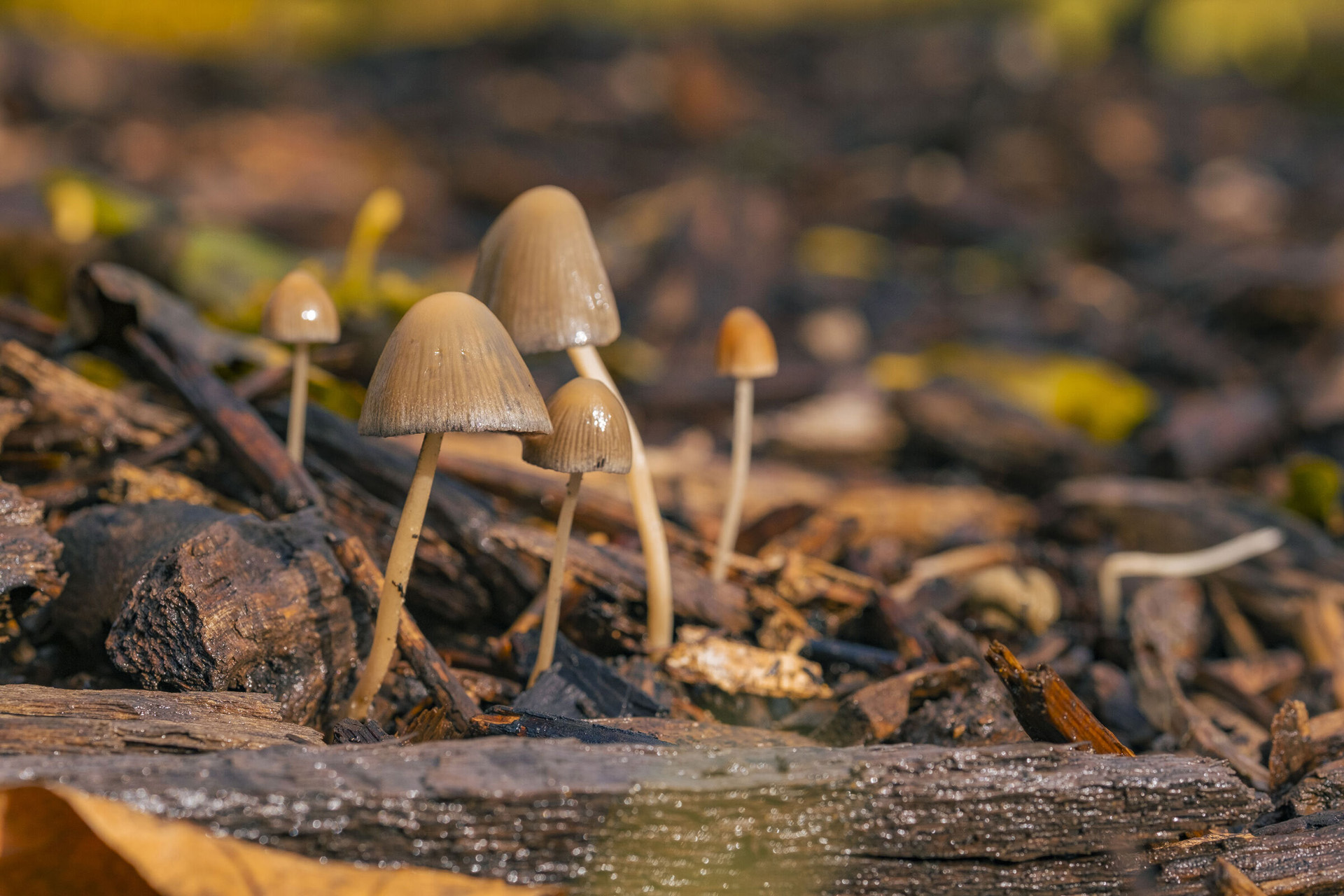
Fungi growing at Kew Gardens. Snapped in autumn 2023.
Which season would you say is best to visit Kew Gardens?
Each season offers a unique experience at Kew Gardens, with something for everyone to enjoy, but autumn is truly transformation with the gardens ablaze in colour.
DISCOVER
Learn more about Kew Gardens, and plan and book your visit at kew.org
Adult tickets are priced from £20 between 1 February and 31 October, and from £12 between 1 November and 31 January. Tickets are also available on the gate for £2 more. Until 26 October, guests can enter for £10 on the gate after 4pm (last entry 5pm, closing at 6pm).




